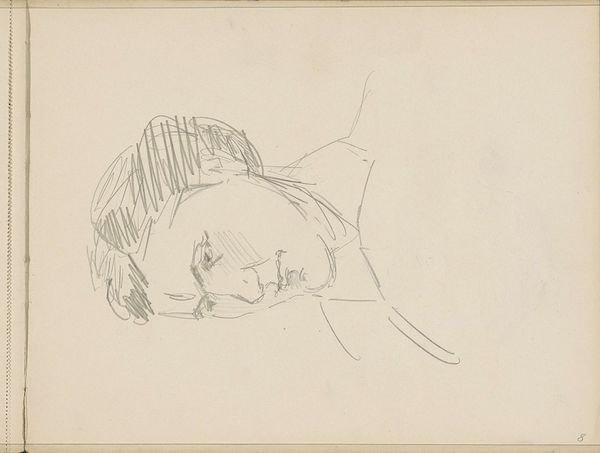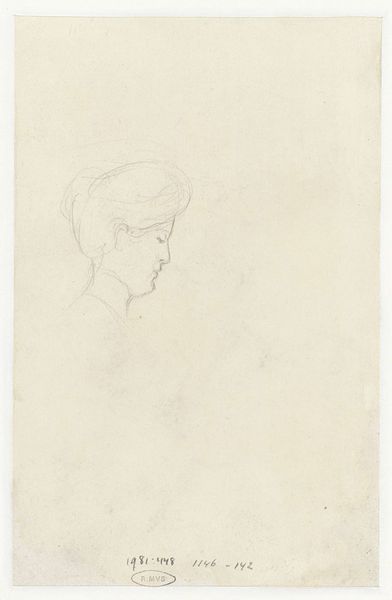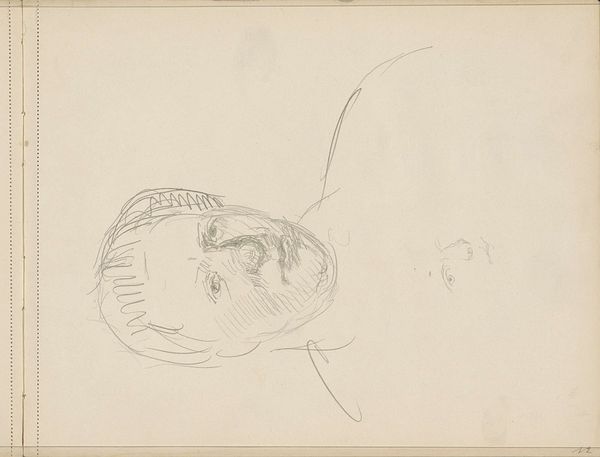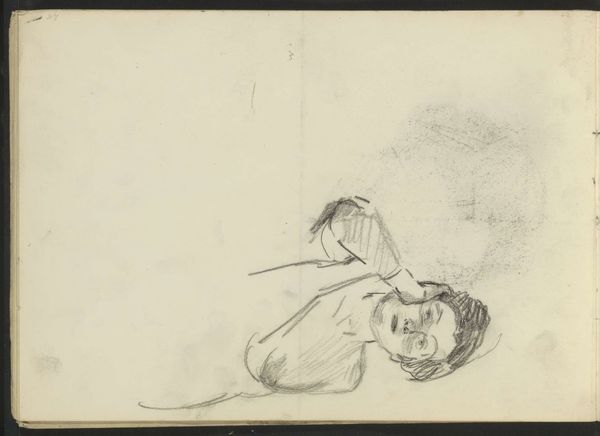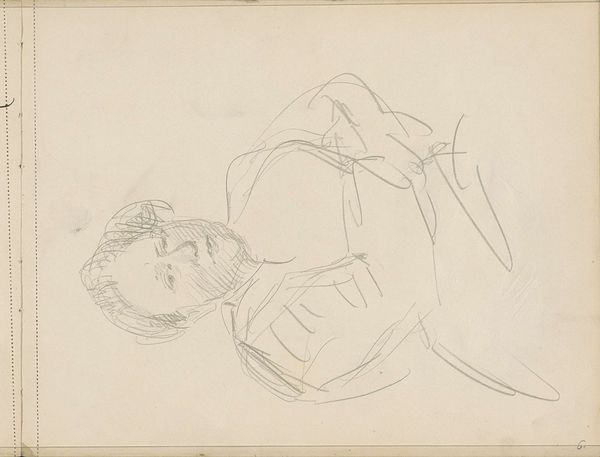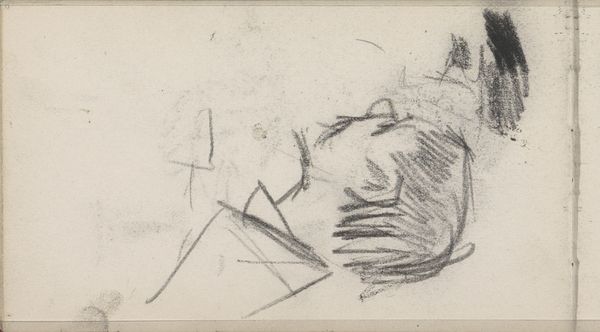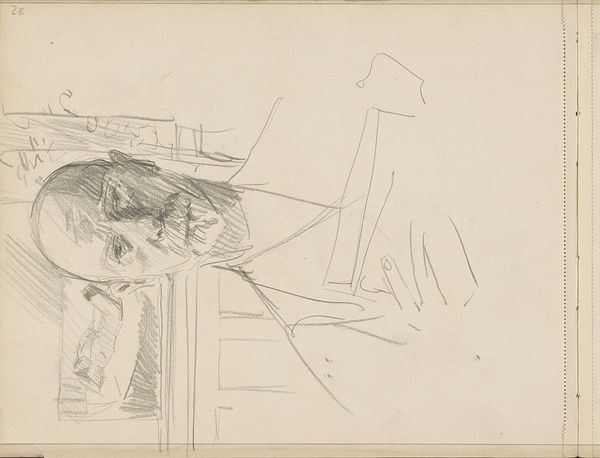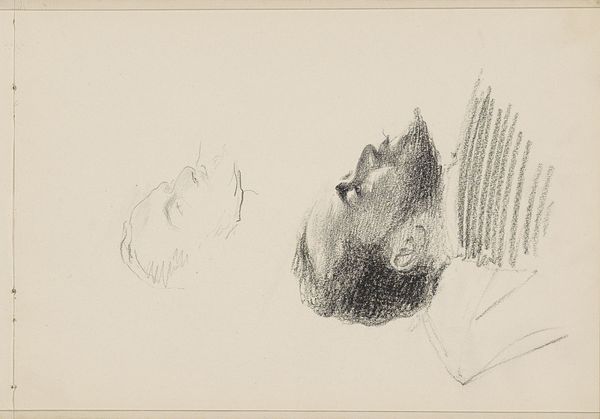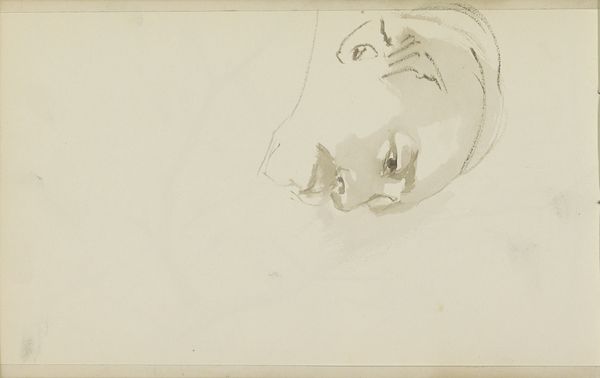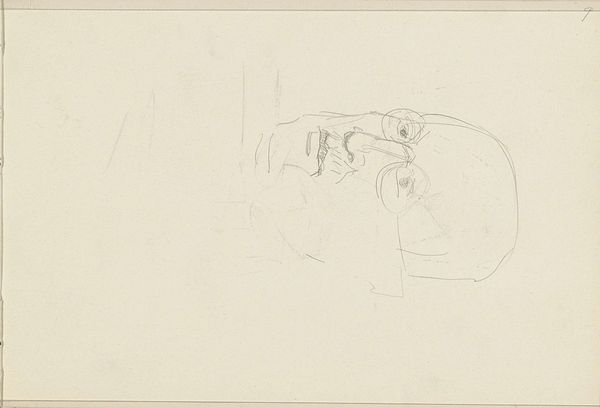
Portretstudies voor het (onvoltooide) schilderij van de Nederlandse rechtbank in Londen, juni 1942: Mr D.J. Sannes. Possibly 1942 - 1946
0:00
0:00
antonabrahamvananrooy
Rijksmuseum
drawing, pencil
#
portrait
#
drawing
#
pencil
#
realism
Copyright: Rijks Museum: Open Domain
Curator: Before us, we have Anton Abraham van Anrooy's "Portretstudies voor het (onvoltooide) schilderij van de Nederlandse rechtbank in Londen, juni 1942: Mr D.J. Sannes." It's a pencil drawing, likely from between 1942 and 1946, and resides here at the Rijksmuseum. Editor: It strikes me as quite stark, almost melancholic, with its muted tones and the subject's introspective gaze. The drawing seems unfinished. Curator: Indeed. The unfinished nature highlights the labor involved in portraiture. Anrooy was commissioned to paint the Dutch court in exile in London, a project left incomplete. These studies represent the individual efforts and materials needed to undertake this type of statecraft commission. Editor: And how those deliberate, short pencil strokes coalesce. It creates an impression of solidity while maintaining an almost ghostly lightness of being. The composition also interests me: the negative space dominates. The subject is very much in one corner. What significance do you attribute to the way he has framed his composition? Curator: I am inclined to connect that with the historical setting and Mr. Sannes’ position within it. Van Anrooy likely made many studies, emphasizing process over outcome, given that only these individual studies of officials are now available for public viewing, unlike the proposed full courtroom rendering of the figures enacting authority and civic stability. The final purpose never fully comes to fruition because of historical instability and uncertainty, as the study gives space to that unfulfilled purpose and function, almost breathing space for the unfinished agenda. Editor: An apt connection, although I still perceive a quiet strength within the portrait. Despite the clear absence of final marks, there is something commanding within the subject's defined profile. The pencil work gives a sense of clarity about who he is. It stands by itself well, which emphasizes the effectiveness of realistic, traditional, artistic methods. The piece communicates clearly regardless of context. Curator: Both qualities intertwine – the drawing is evidence of process and work which are linked directly to this official's role within the specific context of Dutch governance in London during that period. It becomes impossible to truly divorce them without the drawing losing vital associations. Editor: I appreciate having explored how form and purpose unite within this drawing. Curator: A revealing glimpse into both artistic intention and social-historical underpinnings indeed.
Comments
No comments
Be the first to comment and join the conversation on the ultimate creative platform.
